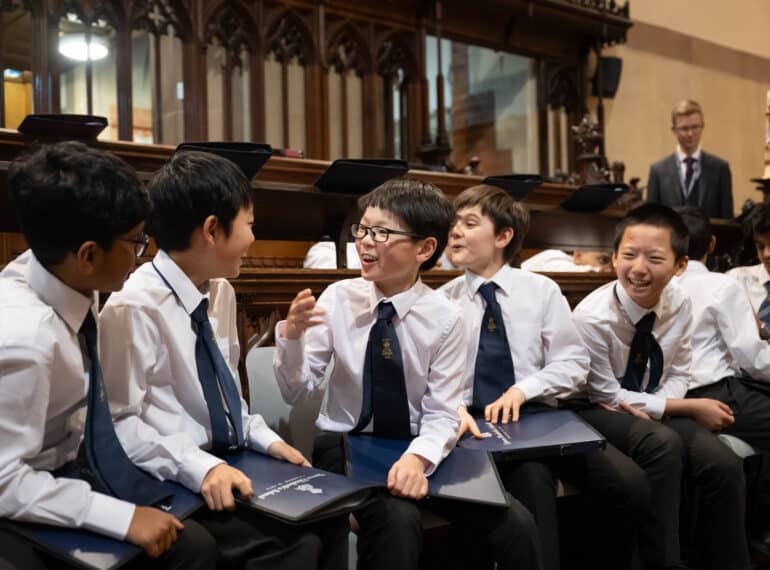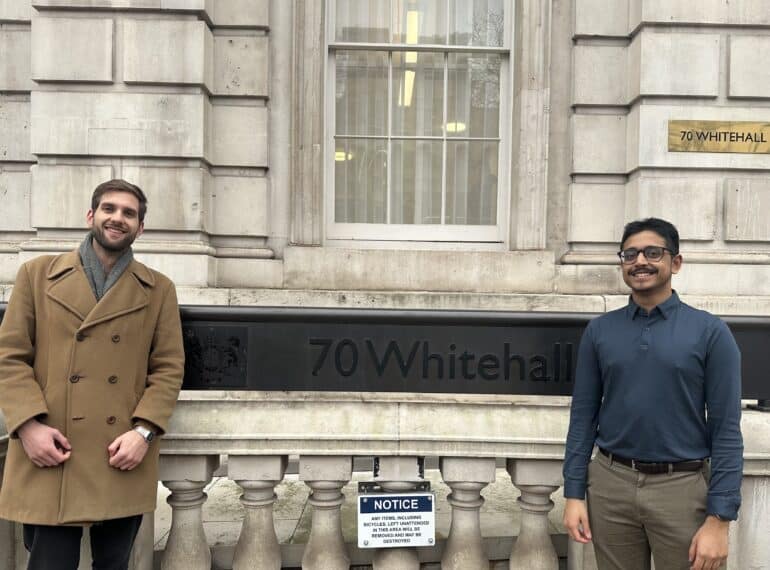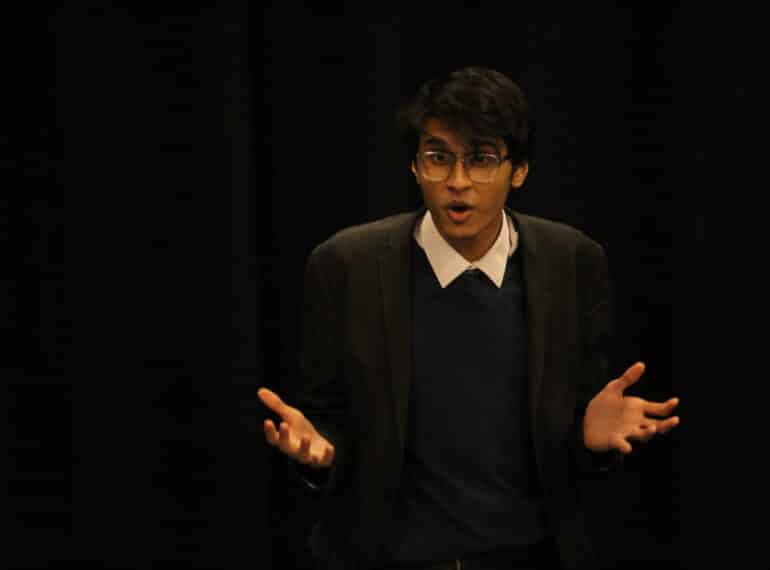
The Robert Dudley Studio, QE’s new facility for drama and the spoken word, has been demonstrating its flexibility in a string of events.
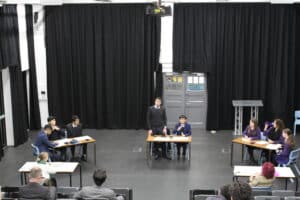 The studio, created from two existing large rooms towards the rear of the Main Building, hosted early rounds of the English Speaking Union’s Schools’ Mace debating contest and of the national Performing Shakespeare competition.
The studio, created from two existing large rooms towards the rear of the Main Building, hosted early rounds of the English Speaking Union’s Schools’ Mace debating contest and of the national Performing Shakespeare competition.
Two events were held there as part of a new partnership with the English National Ballet, while it was also the venue for a special English lesson exploring dramatic imagery and language.
Headmaster Neil Enright said: “With the installation of audio-visual equipment, The Robert Dudley Studio has really begun fulfilling its potential for helping us develop oracy in our pupils.”
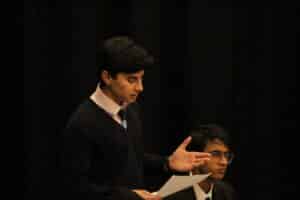 At the Mace, the country’s oldest and largest debating competition for schools, a senior QE team – including School Captain Chanakya Seetharam, as well as Zaki Mustafa, and Koustuv Bhowmick, all from Year 13 – took on Haberdashers’ Girls’ School. Other leading schools from North London and Hertfordshire also competed. The QE team won the event to progress to the second-round heats in January.
At the Mace, the country’s oldest and largest debating competition for schools, a senior QE team – including School Captain Chanakya Seetharam, as well as Zaki Mustafa, and Koustuv Bhowmick, all from Year 13 – took on Haberdashers’ Girls’ School. Other leading schools from North London and Hertfordshire also competed. The QE team won the event to progress to the second-round heats in January.
For the Performing Shakespeare competition, every boy in Year 8 learns a speech to perform in class. The 12 winners from across the six Houses fought it out in the School final, held this month in The Robert Dudley Studio (RDS).
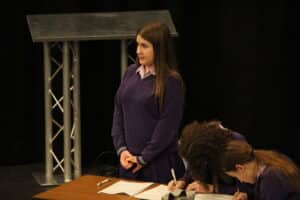 Head of English Robert Hyland said: “There are some things which reading Shakespeare simply as words on the page can never give – so much of the impact of his work comes from how performers have chosen to interpret, following the rhythms and the imagery of the poetry to bring the words to life.
Head of English Robert Hyland said: “There are some things which reading Shakespeare simply as words on the page can never give – so much of the impact of his work comes from how performers have chosen to interpret, following the rhythms and the imagery of the poetry to bring the words to life.
“Year 8 have done a brilliant job this year in not only choosing a wide range of speeches from across Shakespeare’s plays, but in showing an audience how they understand the text in a way which essay-writing can never replicate.
The top three performers were:
- Param Jani, of Underne House, in first place with Is this a dagger I see before me? from Macbeth
- Sai Rushil Manchiraju, of Pearce, the runner-up, with Hamlet’s To be or not to be
- Kavin Rajan, of Harrisons’, who took third place with Henry V’s Once more into the breach dear friends.
“The standard overall was very high,” said Mr Hyland. “Param’s speech from Macbeth was a worthy winner, allowing the audience to see and viscerally feel the conflicting emotions and feelings that Macbeth is experiencing at this point in the play.”
The top two go through to the regional round in the Spring Term.
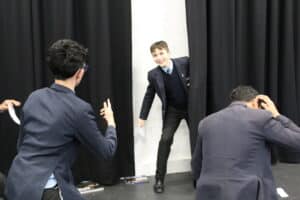 The special English lesson held in RDS also focused on Shakespeare, looking at scene 3 from act 3 of The Tempest, where Ariel (under instruction from Prospero) is creating visions for the royal court. Some members of the court are responsible for deposing Prospero from his Dukedom in Milan before the play starts.
The special English lesson held in RDS also focused on Shakespeare, looking at scene 3 from act 3 of The Tempest, where Ariel (under instruction from Prospero) is creating visions for the royal court. Some members of the court are responsible for deposing Prospero from his Dukedom in Milan before the play starts.
Mr Hyland said: “The focus was on the language of the royal court as it was expressing amazement at natural phenomena, and then on how tableaux could be used to depict the key visual moments of the natural world interacting with humanity (Ariel appearing as a harpy, the vanishing banquet, and so on).
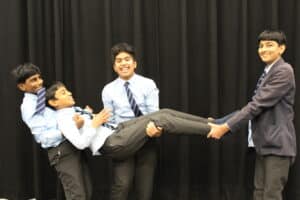 “We subsequently returned to the language, thinking about the delivery of the speech which Ariel gives, and what key or words ideas come to light when presented dramatically.”
“We subsequently returned to the language, thinking about the delivery of the speech which Ariel gives, and what key or words ideas come to light when presented dramatically.”
Finally, the studio’s versatility came to the fore for the English National Ballet partnership events.
First, a screening for 30 Year 9 boys of the ENB’s and choreographer Akram Khan’s award-winning production of the classical ballet, Giselle, was held in RDS. Then, the boys toured the ENB’s design and rehearsal studios in Canning Town, learning about the many jobs associated with ballet and meeting some of the creative team behind Giselle.
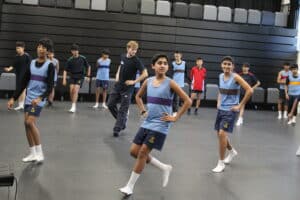 ENB dancers and a musician later came to QE and gave the boys a two-hour contemporary ballet workshop, testing the RDS’s audio equipment to the full. They explored ways of moving, inspired by the plot, characters and choreography of Giselle – and all to live beats and rhythms. The boys gained an insight into the coordination, balance and agility needed in ballet.
ENB dancers and a musician later came to QE and gave the boys a two-hour contemporary ballet workshop, testing the RDS’s audio equipment to the full. They explored ways of moving, inspired by the plot, characters and choreography of Giselle – and all to live beats and rhythms. The boys gained an insight into the coordination, balance and agility needed in ballet.
Assistant Head (Pupil Involvement) Crispin Bonham-Carter said: “It was brilliant to see the studio being used flexibly as both a fantastic surround-sound cinema and then, with the seats retracted, a fantastic dance studio!
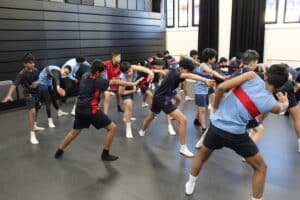 “Best of all though was the enthusiasm and energy the boys put into their dancing. Who knows – maybe the next Akram Khan has just learnt his first dance steps?
“Best of all though was the enthusiasm and energy the boys put into their dancing. Who knows – maybe the next Akram Khan has just learnt his first dance steps?
“Having a dedicated space for performing arts helps facilitate such work, but also provokes staff to seek out new and creative opportunities for the boys.”
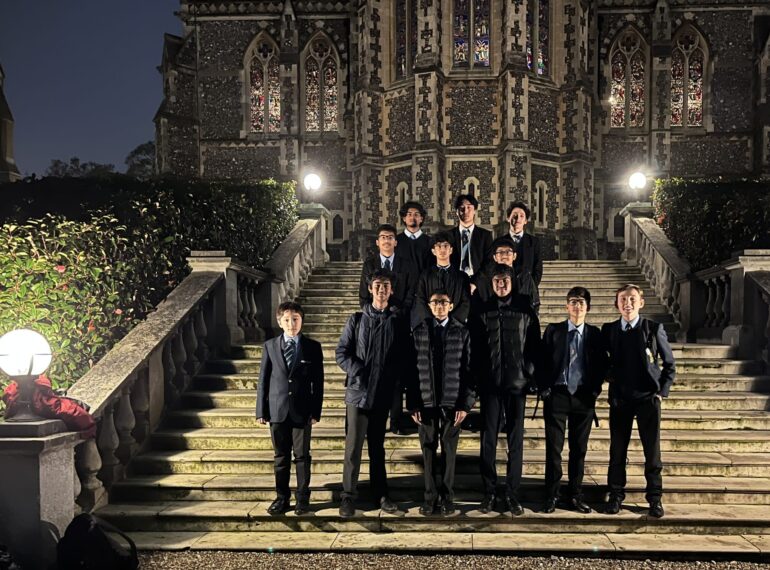
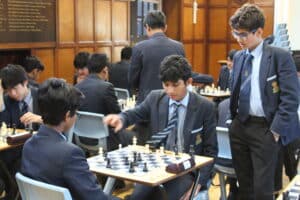 The successes capped a term in which no fewer than 168 boys took part in in-School tournaments for Years 9, 10 & 11.
The successes capped a term in which no fewer than 168 boys took part in in-School tournaments for Years 9, 10 & 11. 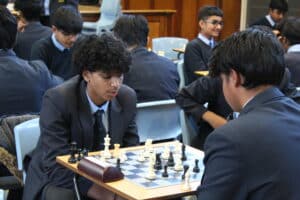 Eighteen teams took part in the regional qualifier.
Eighteen teams took part in the regional qualifier. 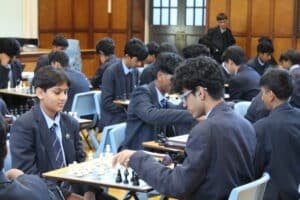 Joshua John, Year 13
Joshua John, Year 13

 The studio, created from two existing large rooms towards the rear of the Main Building, hosted early rounds of the English Speaking Union’s Schools’ Mace debating contest and of the national Performing Shakespeare competition.
The studio, created from two existing large rooms towards the rear of the Main Building, hosted early rounds of the English Speaking Union’s Schools’ Mace debating contest and of the national Performing Shakespeare competition. At the Mace, the country’s oldest and largest debating competition for schools, a senior QE team – including School Captain Chanakya Seetharam, as well as Zaki Mustafa, and Koustuv Bhowmick, all from Year 13 – took on Haberdashers’ Girls’ School. Other leading schools from North London and Hertfordshire also competed. The QE team won the event to progress to the second-round heats in January.
At the Mace, the country’s oldest and largest debating competition for schools, a senior QE team – including School Captain Chanakya Seetharam, as well as Zaki Mustafa, and Koustuv Bhowmick, all from Year 13 – took on Haberdashers’ Girls’ School. Other leading schools from North London and Hertfordshire also competed. The QE team won the event to progress to the second-round heats in January.  Head of English Robert Hyland said: “There are some things which reading Shakespeare simply as words on the page can never give – so much of the impact of his work comes from how performers have chosen to interpret, following the rhythms and the imagery of the poetry to bring the words to life.
Head of English Robert Hyland said: “There are some things which reading Shakespeare simply as words on the page can never give – so much of the impact of his work comes from how performers have chosen to interpret, following the rhythms and the imagery of the poetry to bring the words to life.  The special English lesson held in RDS also focused on Shakespeare, looking at scene 3 from act 3 of
The special English lesson held in RDS also focused on Shakespeare, looking at scene 3 from act 3 of  “We subsequently returned to the language, thinking about the delivery of the speech which Ariel gives, and what key or words ideas come to light when presented dramatically.”
“We subsequently returned to the language, thinking about the delivery of the speech which Ariel gives, and what key or words ideas come to light when presented dramatically.”  ENB dancers and a musician later came to QE and gave the boys a two-hour contemporary ballet workshop, testing the RDS’s audio equipment to the full. They explored ways of moving, inspired by the plot, characters and choreography of
ENB dancers and a musician later came to QE and gave the boys a two-hour contemporary ballet workshop, testing the RDS’s audio equipment to the full. They explored ways of moving, inspired by the plot, characters and choreography of  “Best of all though was the enthusiasm and energy the boys put into their dancing. Who knows – maybe the next Akram Khan has just learnt his first dance steps?
“Best of all though was the enthusiasm and energy the boys put into their dancing. Who knows – maybe the next Akram Khan has just learnt his first dance steps?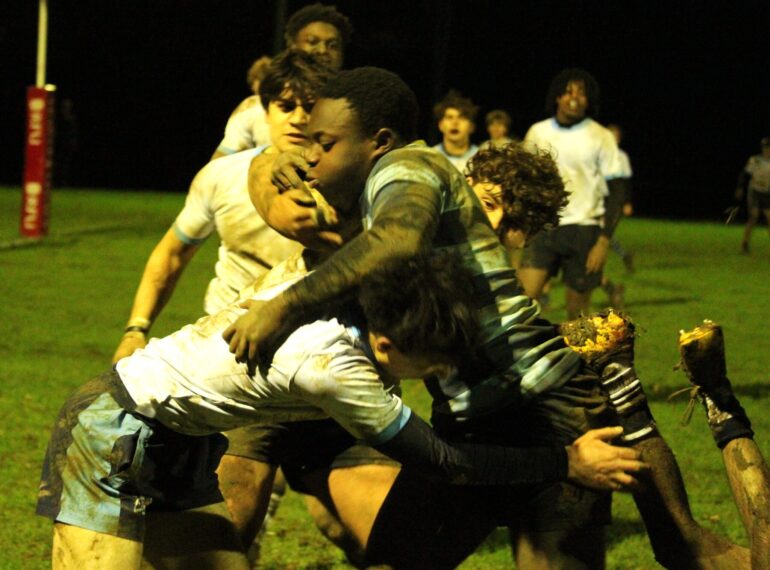
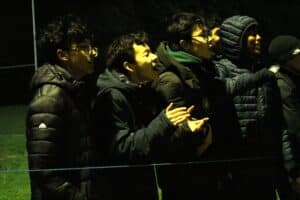 Finely balanced and hugely physical, the match at Barnet Elizabethans Rugby Football Club was played to the sound of loud support from the touchline.
Finely balanced and hugely physical, the match at Barnet Elizabethans Rugby Football Club was played to the sound of loud support from the touchline.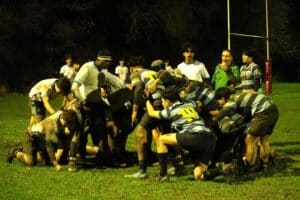 The roles were reversed in the second half, with QE retaining the ball much better and exerting significant pressure. “Powerful ball-carrying and some exciting breaks in the wide channels did not, unfortunately, convert into points,” said Mr Hart.
The roles were reversed in the second half, with QE retaining the ball much better and exerting significant pressure. “Powerful ball-carrying and some exciting breaks in the wide channels did not, unfortunately, convert into points,” said Mr Hart.  There was strong support from current pupils, staff and a number of OEs (particularly from the 2024 leavers) – many with memories of playing this fixture in recent years.
There was strong support from current pupils, staff and a number of OEs (particularly from the 2024 leavers) – many with memories of playing this fixture in recent years. 